Striped platidoras: characteristics, nuances of care and reproduction
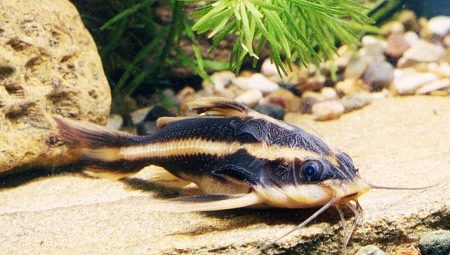
Currently, many species and varieties of fish are bred in aquariums, which are constantly replenished with new individuals. Among this list, it is worth highlighting a beautiful and interesting fish - striped platidoras, which is popular not only for its visual appeal, but also for its ability to "sing".
Description
Platydoras armatulus is the most popular type of catfish that can be bred at home. This variety stands out among others for its visual appeal due to the presence of wide contrasting stripes along the body. The pattern is most clearly visible in young fish. In the wild, an adult catfish can reach 20 centimeters in size; in a closed environment, striped Platidoras grows to a maximum of 15 centimeters.
Fish of this family are quite curious, so it is interesting to watch them. Despite the fact that the catfish is a nocturnal predator, in the presence of comfortable conditions in the aquarium, its inhabitants will be happy to actively explore their territory. It is this type of catfish that is most often used to breed several species of sea and river individuals in one tank.
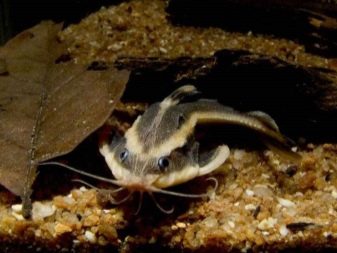

The striped platidoras comes from the Bronyakov family, and this individual is also called the side-scaly catfish. This name is due to the peculiarities of the skin in fish, which is distinguished by its strength, in addition, the representatives of the family have a very developed occipital shield and bone growths along the lateral lines of the body. There are spikes on the shields, which provide the fish with good protection.Also, catfish are called "singing", this name is due to the sounds that the pectoral fins emit when in contact with the grooves in the shoulder. And drum sounds are formed from the vibrations of the swim bladder.
Platidoras are quite hardy, individuals have a cylindrical body, flat abdomen. Females, like some other fish species, are usually larger than males. The body can be painted black and white, dark brown with gold or any other shade. The muzzle of individuals and the lower part of the pectoral fins are lighter in color. You can find out about the age of the catfish based on the clarity of the color: the more contrasting the lines on the body, the more years the fish is. His head is large, his eyes and mouth are also expressive, plastidoras have mustaches characteristic of the family, located on both sides of the mouth. The life span of catfish is about 20 years in their natural environment; in captivity, the life cycle may be shorter.
Such ornamental fish are ideal for the novice aquarist, since the individuals do not require special conditions for home keeping.
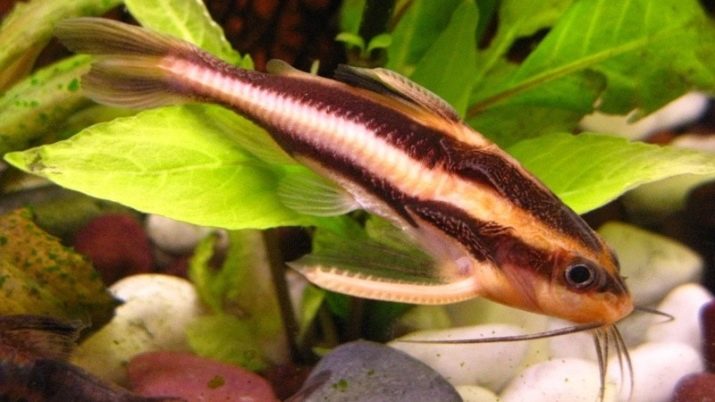
How to distinguish a female from a male?
Experienced breeders of ornamental aquarium fish recommend using visual differences between male and female members of the family to determine gender. As for Platidoras, you should look at the individual you like from above. Sexually mature females will be larger, in addition, they will be fatter than "boys". This is the main difference between females and males of striped catfish, which should be guided in the first place.
Content rules
To keep catfish in an aquarium, it is worth using containers designed for at least 100-120 liters. A shy nocturnal predator prefers to stay in containers with a minimum amount of light. It is recommended to cover the surface of the water with different plants. Catfish need shelter, so roots or driftwood with voids should be placed at the bottom of the aquarium, you can use clay pots. At the bottom, flora is optional, but if other fish are present, its presence is allowed. In addition, plants can provide more shade in the container. The bottom should be covered with sand or fine gravel.
To observe Platidoras, you can use red lamps or use the options for night illumination, the eyes of fish do not react to red light beams, which can be used in the dark. The water in the aquarium should be at a suitable acidity level, optimal pH values are in the range from 5.8 to 7.5. For catfish, it is important to maintain a constant temperature from +23 to +30 degrees.
In this case, the hardness of the liquid should be in the range from 2 to 20N.
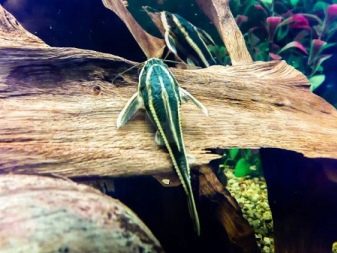

Aquarium care
In order for the fish to be healthy and develop correctly, it is necessary to change about a third of the total volume of water in the aquarium once a week. Caring for the catfish "house" should also be limited to ensuring good water filtration. It is necessary to maintain good aeration so that the liquid in the tank is as oxygenated as possible. Plants kept in an aquarium together with fish also require maintenance. To make swimming comfortable for fish, all vegetation can be shortened, silt deposits, which can grow on large leaves or shoots, can be removed. Platidoras do not eat aquarium plants, so they must be changed regularly, only small algae are suitable for consumption.
Sand or gravel should be fine in fraction, it is worth using only cleaned material without sharp components.
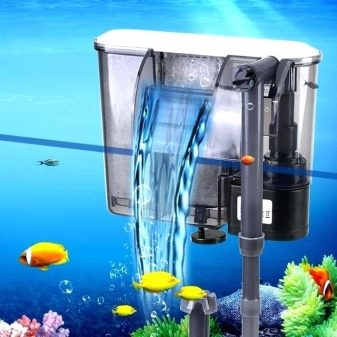
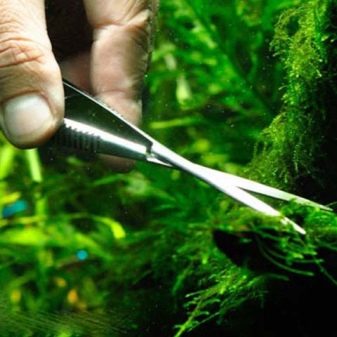
What to feed?
The striped "singing" catfish is an omnivorous individual, so even a novice aquarist will be able to provide the right diet for fish. For keeping Platidoras it is recommended to use granulated dry food of industrial production. It can be in pill or croquet form.In addition to this, it is worth purchasing live or frozen foods that are suitable for feeding predators. It can be bloodworms, various worms, etc. Feeding is carried out in the dark. To grow healthy fish, it is worth remembering that catfish are prone to obesity, so it is not recommended to overfeed it even before breeding. You can determine that the fish does not need food yet by the rounded abdomen. As soon as the platyroid's belly becomes flat, you can safely feed it.

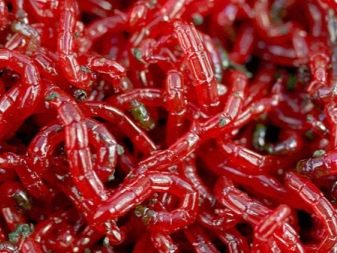
Breeding
In closed aquariums, breeding of this fish is extremely rare. Natural laying of eggs occurs in decorative tanks only in isolated cases, but for this the capacity of the aquarium must be large. In nature, females lay eggs in streams and small rivers. In an aquarium, catfish can build peculiar nests using leaves, pieces of bark, etc. In such a nest, one individual takes refuge, and the second swims in for fertilization and subsequent breeding of offspring.
The spiny predator reaches sexual maturity closer to two years of age. Experienced aquarists, in order to raise fry, transplant several individuals into a separate container, where there will be minimal access to light, but good aeration. In the same place, a spawning ground is formed, in which there will be no sharp corners. The water temperature is maintained in the range of +27 - -27C, while its level should not be more than 20 centimeters. Before spawning, the fish are transferred to live food. First, a male is transplanted into the container, which will be engaged in the construction of the nest. If this does not happen, then the female will be able to lay eggs in the bottom holes in the sand or gravel. The diameter of nesting nests usually varies between 3-10 centimeters. For spawning, the pituitary suspension of bream or sterlet is most often used. For a female catfish, up to two males can be used for fertilization.
Usually, female Platidoras lay about 300 eggs, as soon as this happens, it is recommended to remove the parents of future offspring from the aquarium. The incubation period for fry is 48–72 hours. Already on the 5-6th day the fry will be able to swim and feed on their own. At first, they are encouraged to offer live moths, microworms. Small carnivores develop at a slow rate, so it will take some time for the aquarist to devote to caring for the offspring. Once the fish have reached a third of the size of an adult fish, they can be stocked in a shared aquarium.
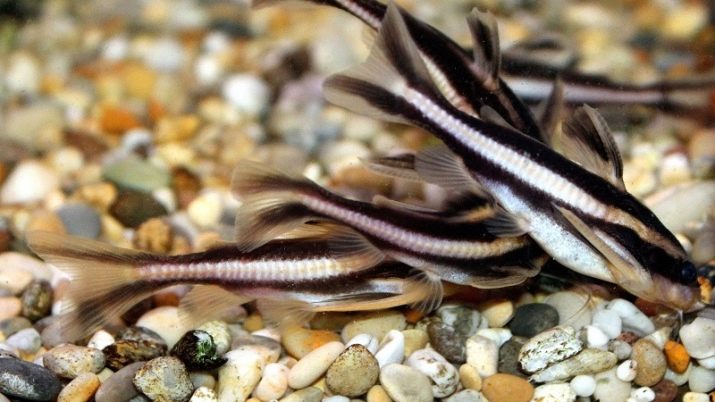
Compatibility with other fish
Catfish are benthic fish species that are not prone to aggressive behavior towards other inhabitants of the aquarium. It is these individuals that can be safely bred in multi-species tanks, where fish of medium or large sizes will be present. However, it is still worth abandoning the neighborhood with small breeds, since there is a possibility that they will be perceived as food. Striped Platidoras have excellent armor on the body, so they are not afraid of even large aggressive decorative species of sea or river fish. Catfish can be hooked up to the scalar, kept together with gouras, tetras, with other varieties of catfish, cichlids or carp.
Singing fish can be populated into the aquarium in groups or separately, but in the first case, some conflicts are possible regarding the territorial dominance of males. There may be a section of shelters in catfish tanks.
However, in the wild, such predators, on the contrary, prefer to live in groups, thus protecting themselves from the attack of larger, aggressive and dangerous aquatic inhabitants.

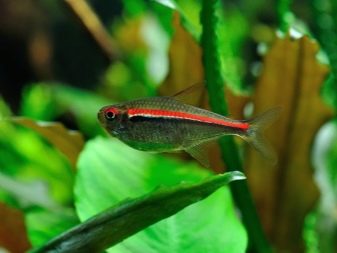
In the next video, you will find additional information about the content, reproduction, feeding and compatibility of striped Platydores.








